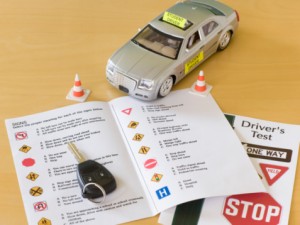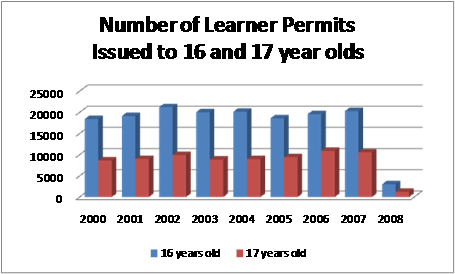Education As Incapacitation: Why Are States Making it Harder to Get a Learner's Permit?

(Comstock)
I got in trouble earlier this summer when a teacher caught me surfing the Internet during a “Safe Driving Practices” class I had to attend so that my son could get his Connecticut driver’s license. While a parent has to attend for 2 hours, a 16-year-old must attend for a mind-numbing 8 hours before qualifying to take a written test. The mandatory class is part of Connecticut’s graduated driver licensing requirements, which make it (i) harder for a 16 or 17-year-old to get a learner’s permit, (ii) harder to get a license, and (iii) severely limits the kinds of driving you can do with these licenses.
I was surfing the Internet during class, because something the instructor said about accident statistics since the program was rolled out in 2008 seemed defensive – so I started to look up Connecticut statistics online.
Having attended 2 hours of the training, I seriously doubted that the 8-hour classes serve an educational function. Nonetheless, surfing made me feel somewhat better about having to sit there because I learned that the new requirements are having an impact: they’re deterring young people from getting their licenses. Look, for example, at what happened to the number of 16 and 17-year-olds receiving learner permits in 2008 when the law took effect (which I calculated from this data):

A new state study on teen driving indicates that the rate at which 16 and 17-year-olds are becoming licensed to drive is down sharply since the new law went into effect. In 2001, 42% of 16-year-olds were licensed to drive. Now only 29% are. Connecticut’s experience is consistent with a national trend: “the proportion of 16-year-olds nationwide who hold driver’s licenses has dropped from nearly half to less than one-third, according to statistics from the Federal Highway Administration.”
The study points to a number of factors causing this decline, including reduced “discretionary spending in a poorly performing economy,” “restrict[ed] the use of cars on campus,” parents being more “willing to chauffeur their children to activities, and pastimes like surfing the Web that keep them indoors and glued to computers.”
But I’m betting that the hassle factor of the new restrictions looms large. You have to do a lot more to get a license and there is less that you can do with a minor’s license if you do qualify. It’s a whole lot easier just to wait until you’re 18 when none of these special prophylactics apply.
A closer look at the data suggests that young males and females are being equally deterred from getting their licenses. As a matter of gender equality, this might seem like a good thing, but young male drivers are about twice as dangerous as young female drivers (see statistics here and here). I worry that the new law is deterring a lot of young women from driving (or making them jump through a bunch of arbitrary hoops) in order to keep the more dangerous male of the species off the road.
I also worry that the restrictions likely have pronounced class effects. The 16-year-olds who can afford to pay for the class and who can get their parents to take the 2 hour class are likely to have more resources than those who don’t. Like literacy tests for voting, the most important impact of the new educational requirements for driving is to incapacitate citizens from exercising the right or privilege. A special poll tax for young drivers might accomplish much the same result. But by reframing impedance as education, we make the requirements more politically palatable.

Comments